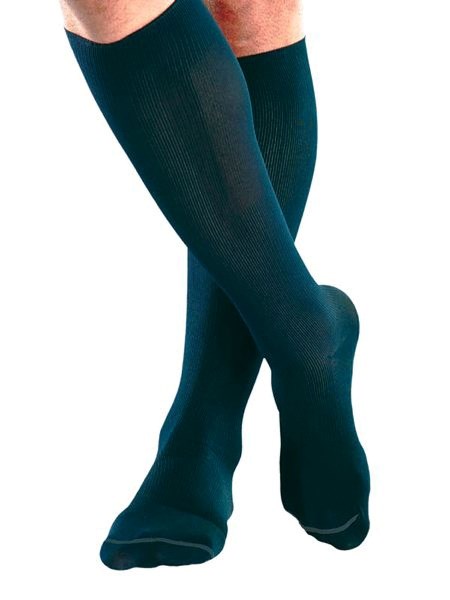Compression therapy is a common treatment for aging or sedentary individuals who need a circulation boost in their lower extremities.
Compression therapy is a common treatment for aging or sedentary individuals who need a circulation boost in their lower extremities.
If used incorrectly or unnecessarily, however, it can lead to serious health complications and even the loss of limbs, said Leonora Santos, clinical nurse educator for home care with Alberta Health Services.
Compression stockings are similar to knee-high socks, but are tight and elasticized. They are used mostly to reduce edema, which is a type of swelling caused by excess fluid retention commonly found in the feet, ankles and lower legs.
“By putting a pressure-gradient sock on, … (it) keeps everything intact so as you use your calf muscle, that muscle pushes against that sock and the sock comes back and pushes that fluid back up,” Santos said.
Keeping active is the most effective way to fend off edema because activating muscles helps circulate blood from extremities to the body’s core.
It is a commonly held misconception that everyone can benefit from compression therapy.
Santos said medical professionals must thoroughly investigate if compression therapy is a suitable form of treatment by ordering the proper tests and researching a patient’s past medical history.
“It’s not a blanket statement that everyone can wear it,” she said. “You’re at risk of actually cutting circulation off and there’s the possibility that that person can actually lose a limb if they don’t have appropriate circulation for that leg.”
Alberta Aids to Daily Living, a provincial program which helps cover the cost of medical supplies for individuals with chronic health problems, requires individuals to undergo an assessment, to be conducted by a nurse or occupational therapist, which will determine if it is safe to apply compression.
Individuals not seeking benefits from this program must obtain a prescription from their physician before purchasing compression garments. Santos said some doctors would perform radiology tests to determine if blood flow is suitable prior to writing a prescription.
“Usually, the doctor tries other means before putting (people) into stockings,” she said. “That’s your last resort.”
Although assessments for patients seeking coverage from private insurance is not mandatory, they are encouraged
John Muir, spokesperson for Alberta Health, said assessments are only required if patients are claiming expenses under the Alberta Aids to Daily Living program.
“A doctor has to prescribe compression garments and it’s up to them to ensure that it’s suitable for the patient and they should follow best practices,” he said. “One of those best practices would be to ensure an assessment is done on the legs of the patient.”
Individuals with a permanent reddish-brown colour on their lower calf as well as those with narrowing at the ankles are both candidates for compression therapy, Santos said.
People with cardiac or respiratory issues must consult their physician before purchasing any pressure-gradient items, Santos said, adding certain individuals with diabetes must also exercise extreme caution.
If it is determined that compression therapy is beneficial to a patient, a fitting must be performed.
Santos said fittings should be performed first thing in the morning, as the legs are at their most reduced size. As the day progresses, legs tend to swell, which could lead to inappropriate measurements.
For individuals wearing higher-pressure stockings, fittings must be performed annually with regular follow-up with physicians.
